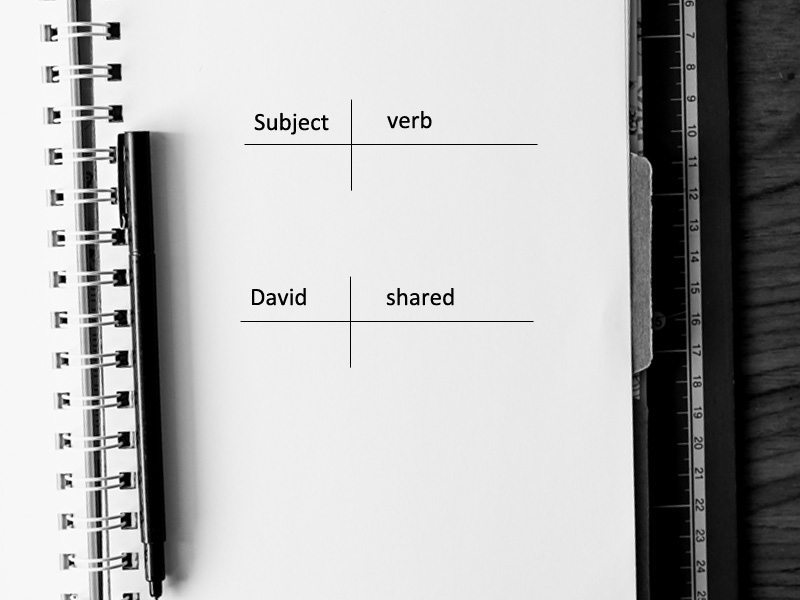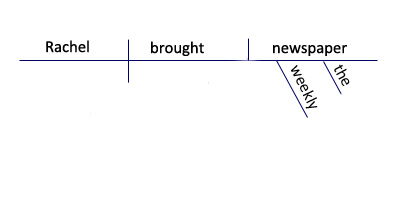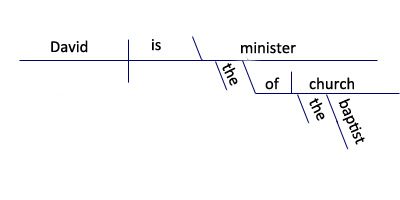Diagramming English Sentences: I have found that sentence diagramming is an effective way to learn grammar. Sentence diagramming will help you see the relationships between words, phrases and clauses in sentences. In fact, after learning sentence diagramming, you will begin to see how sentences work before you even diagram them.
However, you will need to have at least a rudimentary knowledge of the parts of speech and how they function in sentences: nouns, pronouns, verbs, adjectives, adverbs, conjunctions, prepositions, etc. etc.
Diagramming sentences is a learning process. I started in fifth grade and I continued in university when I learned a second language.

1. Subject and Verb
The subject and the verb form the heart of a sentence. Though we rarely find a sentence consisting of only two words (subject and verb), the fact still remains that a group of words is not called a grammatically complete sentence if it does not contain these two parts.
The subject and verb are the initial building blocks for diagramming the English sentence. Everything else will expand and modify the subject-verb combinations.
Once you have found these subject-verb combinations, you will need to begin the diagramming process by drawing a line with subject on the left side and the verb on the right side. It is important that you separate subject and verb by drawing a vertical line. See image below!
I have written an in-depth article explaining simple sentences. You can check out this article by clicking on the following link – What is a Simple Sentence With Examples.
Let’s diagram the following two sentences.
Rachel brought dad the weekly newspaper.
David is the minister of the Baptist Church.
Before I diagram an English sentence, I like to mark off the different parts of speech. There are several ways to do this. But I often do it like this.
Rachel (subject) brought (verb) dad (indirect object) the (definite article) weekly (adjective) newspaper (direct object).
David (subject) is (linking verb) the minister (predicate nominative) of the Baptist Church (adjective phrase).


2. Subject, Verb and Direct Object


3. Subject, Verb, Direct Object and Indirect Object


The “x” stands for “to” or “for.”
4. Subject, Linking Verb and Predicate Noun and Adjective


5. Adjectives and Adverbs


Adjectives modify nouns or pronouns. Adverbs modify verbs, adjectives or other adverbs.
6. Adjective and Adverb Phrases


Diagram adjective and adverb phrases under the words they modify.
The best way to learn diagramming English sentences is to start diagramming the subject-verb combinations and then expand with direct object or indirect object and the modifiers.
You will be surprise just how quick you will pick up diagramming by just doing it.
Yes, you will need some resources. There is a lot of free stuff on the internet. However, you can also purchase material that will fast track your experience of diagramming English sentences.
Diagramming English Sentences Resources
Sentence Diagramming Exercises: An Introduction to Sentence Diagramming by Elizabeth O’Brien
Sentence Diagramming Reference Manual: How To Diagram Anything by Elizabeth O’Brien





